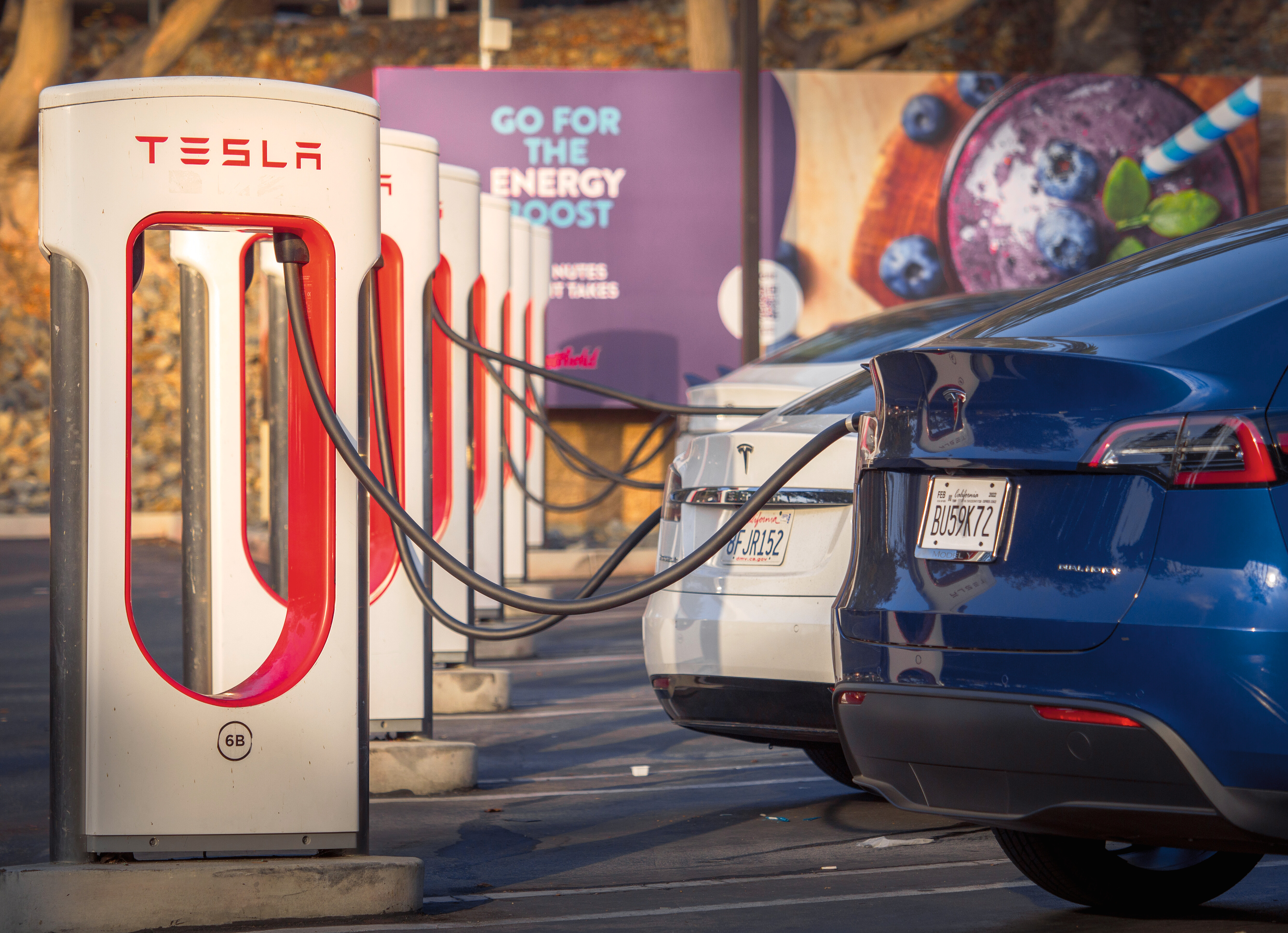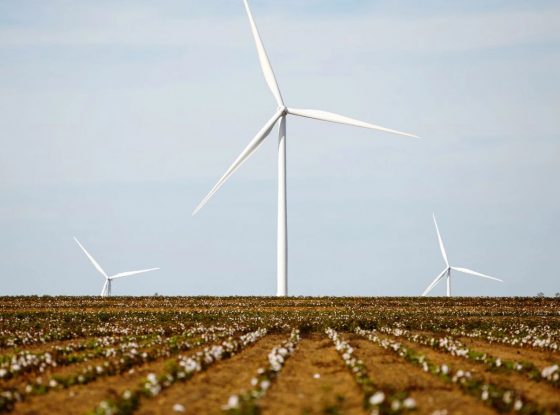The other benefit of electric vehicles

Widespread adoption of EVs promises not only major reductions in CO2 emissions, but air pollution as well, potentially saving hundreds of thousands of lives annually. There are, however, important caveats.
All signs point to a tipping point for electric vehicles (EVs) in the coming years, with widespread adoption in many countries. Eleven percent of new cars sold globally are now fully electric. And new policies, such as tax credits for electric cars in the US Inflation Reduction Act (IRA) and regulations banning the sales of fossil fuel-powered cars after 2035 in Europe and California, are accelerating EV sales. Anticipating rapid growth, automakers plan to spend $1.2 trillion by 2030 designing and building EVs. That’s likely to be good news for the climate, since the transportation sector (mostly cars and trucks) emits more planet-warming CO2 than any other sector in the United States.
At the same time, this EV revolution is heralding another benefit that’s often overlooked—cleaner air and healthier people. By eliminating the particles and gases like NO2 spewing from car tailpipes and truck exhausts, EVs slash the ambient levels of air pollutants that have been linked to hundreds of thousands of early deaths annually around the world from cardiovascular and respiratory diseases, cancer, and other illnesses. “If we make a widespread transition to EVs, we can expect reduced premature mortality and improved asthma outcomes,” says Susan Anenberg, director of the Climate and Health Institute at George Washington University in Washington, DC. Crops and vegetation will benefit as well.
Yet the details—including the types of EVs and where they’re driven—matter. Trucks are worse offenders than cars. And in some places, more EVs could cause a rise in ground-level ozone, the main ingredient of smog. There’s even some question as to whether EVs will increase particulate pollution, if extra weight due to batteries speeds tire wear. The benefits are clear, but the caveats will require attention from scientists, engineers, and policymakers. “We are moving headlong into a world of electrified transport, but some of the implications of this move remain unresolved,” says numerical modeler Daniel Horton, leader of the Climate Change Research Group at Northwestern University in Evanston, IL.

ccording to a report from UC Berkeley on the impacts of cleaner transportation, the “DRIVE Clean” scenario (a future in which EVs constitute 100% of new US light-duty vehicle sales by 2030 and 100% of medium-duty vehicle and heavy-duty truck sales by 2035) would avoid 150,000 premature deaths resulting from air pollution, through 2050. Image credit: UC Berkeley | Source from : pnas.org
Chemical Reactions
To get answers, researchers are using a combination of complex modeling, real-world monitoring, and detailed epidemiological studies. The initial inputs are data on the amount of particulates and gases emitted into the air from cars, point sources like power plants and factories, and even home furnaces. These are compiled into a National Emissions Inventory and updated every few years. Modelers like Horton then compute how those pollutants are blown by winds and transformed by chemical reactions to calculate the levels and types of air pollution at any given time and place.
Once the models compute baseline levels of air pollution, researchers can explore how much the amounts would drop by switching to EVs. They add up the health gains based on decades of epidemiological results, which show how the incidences of diseases and premature deaths vary among places with different levels of air pollution, and put a dollar value on those benefits using medical costs and economists’ calculations of the value of a year of life.
This process is not an exact science. Each step has uncertainties, from the accuracy of the pollutant emissions data to the complexity of the air chemistry. The models are computationally expensive, prompting trade-offs between the complexity of the meteorology and chemistry, and the resolution—the size of the areas for which pollution levels are calculated.
Clear Health Benefits
The results also depend on assumptions about the rate and extent of EV adoption, notes Erin Mayfield, assistant professor of engineering at Dartmouth College in New Hampshire, “but the models do help in narrowing down the range of potential benefits—and consistently show that the benefits of widespread adoption are large.” Princeton’s Net-Zero America report, which Mayfield worked on, estimates that switching entirely to EVs powered by renewable or other zero-carbon electricity would avoid up to 170,000 premature deaths and $1.5 trillion in damages (mostly from the avoided deaths) by 2050. The 2035 Report 2.0 from Energy Innovation and the University of California (UC), Berkeley, estimates 150,000 avoided deaths and $1.3 trillion in lower environmental and health costs by 2050 . “I don’t think there is any doubt that if we electrify vehicles and green the grid, we are going to see tremendous health benefits,” says Horton. Even with an electricity grid like today’s, in which 61% of power is generated by burning fossil fuels, swapping out just one-quarter of all vehicles for electrics would avoid nearly $17 billion in damages, Horton’s modeling shows. A grid with more renewable energy inputs will further enhance the health benefits.

A UK-based cleantech start-up called The Tyre Collective has designed devices to collect particulate pollution from car tires. Image credit: The Tyre Collective | Source from : pnas.org

EV batteries require significant quantities of lithium, shown here being mined in Chile’s Atacama Desert, as well as other metals. Their extraction currently presents pollution issues, labor hazards, and geopolitical challenges. Image credit: ScienceSource | Source from pnas.org
Norway provides a real-world example of what’s possible. About 80% of new cars sold now are fully electric (and another 10% are plug-in hybrids) and are powered by an electricity grid that is already very green (91.8% hydropower and 6.4% wind). As a result, between 2000 and 2020, the emissions of particles under 2.5 micrometers in size (a particularly dangerous type known as PM2.5) plunged by nearly three-quarters, according to Statistics Norway.
Sales of EVs in the United States are way behind Norway’s, but are accelerating. They hit 6% of the total in the third quarter of 2022, up from 2.2% in the third quarter of 2020. Energy Innovation predicts that the tax incentives in the recently passed IRA will lift sales to 22 to 29% of all new cars in the United States by 2030, depending on factors like the share of purchases that qualify for credits (the act stipulates certain “made in America” requirements), up from a projected 21% without the incentives. “The impact of the IRA might be small in the near term, but I think the numbers will be big on the health and climate benefits within 10–12 years,” says David Wooley, executive director of the Center for Environmental Public Policy at UC Berkeley’s Goldman School of Public Policy in California.
Still, there’s at least one speed bump on the road toward achieving pollution and health benefits from EVs: one effect of reduced NO emissions.
Ozone Bump
Internal combustion engines emit oxides of nitrogen (NOx), including NO and NO2. NO2 is particularly harmful to health, causing lung inflammation, asthma, and other problems. NOx also interacts in complex ways with other chemicals in the atmosphere; for example, it can react with organic compounds in the air in the presence of sunlight to form ground-level ozone.
But when NOx pollution is high, NO emitted from gas and diesel engines has the paradoxical effect of breaking down ozone, which is why ozone levels can be lower in city centers and near busy roads than in rural areas. As a result, the widespread use of electric cars could decrease NOx emissions and could initially cause ozone to tick up in areas with lots of traffic, making it more challenging for those areas to meet ozone regulatory standards. Of course, switching to EVs would still bring major gains in health by reducing levels of PM2.5 and NO2.
Recent research also highlights the importance of where EVs are—and how health impacts can vary dramatically among communities. The initial work documenting air pollution’s health toll, such as the pioneering 1993 Harvard Six Cities study , was simply able to show that disease and premature deaths are higher in cities where pollution levels (specifically of particulate matter) are relatively high compared to those in other cities. Those studies were based on the health histories of several thousand people and on measurements of pollution made at just one centrally located monitor in each city.
Concerns over Critical Materials
A complete accounting of EV impacts must include the whole supply chain, including the mining of critical materials, such as lithium and cobalt. These are clearly not emissions-free activities. Even so, recent studies suggest that, when it comes to greenhouse gas emissions over complete life cycles, EVs come out well ahead of conventional vehicles, with CO2 emissions from mining and battery manufacturing smaller than the emissions from producing and refining fuels like gasoline and diesel.
The pollution issues, labor hazards, and geopolitical concerns are significant, however, and must be “urgently addressed,” warns a 2020 report from the United Nations Conference on Trade and Development . Lithium mining currently requires vast amounts of water for evaporation ponds and can contaminate rivers and water basins with toxic chemicals, for example . Cobalt mining is dangerous, with tunnel collapses that kill or injure workers; it also stirs up toxic dust that causes respiratory diseases and other illnesses and is a water pollution concern.
Plus, China’s dominance as a supplier of rare earth elements and other materials could mean a transfer of power that leads to a major geopolitical destabilization, offers Nick Molden, founder and CEO of Emissions Analytics.
EV boosters, however, see reason for optimism in alternative approaches and locations—such as moving away from cobalt in batteries or separating lithium using membranes in North America instead of huge evaporation ponds in Chile. “For every criticism, there is someone already moving towards commercializing a solution,” argues Scottish battery electrochemist and consultant Euan McTurk. “The pace of progress is so fast that the electric vehicle picture is a lot rosier than many people think.”
In contrast, the study of pollution and health now has entered what Anenberg calls “the era of Big Data.” The European Space Agency’s Earth observation satellite Sentinel-5 Precursor, launched in 2017, can measure NO2, a better indicator of vehicle pollution than PM2.5, down to areas just 5.5 kilometers by 3.5 kilometers in size, allowing researchers to spot variations in air pollution among individual neighborhoods. And, on the health side, scientists can mine gigantic healthcare datasets from, for example, Medicare.
Such data starkly document, for example, that there are big racial and socioeconomic disparities in both pollution and health. When Anenberg’s team measured pollution in the “most White” and “least White” census tracts across the United States, they found that NO2 levels in the least White tracts were nearly three times higher than those in the most White . The reason: Many minority communities are jammed up against highways and major traffic corridors, often because of past redlining and highway construction that ripped through the neighborhoods. The racial differences in levels of pollution are so large, in fact, that even when vehicle traffic plummeted by 50% during the COVID-19 lockdown in early 2020, causing NO2 levels to drop by a median of 21.6% across 20 cities, the least White areas still experienced NO2 pollution 1.5 times higher than the prepandemic levels in the most White communities. “That was unexpected,” says Anenberg.
So it really matters where EVs are being driven. Switching to EVs can be an especially effective policy for environmental justice, lowering pollution near highways. But the benefits will also be significant anywhere that cars are racking up the miles. Princeton’s modeling shows big health benefits in places that have both massive amounts of traffic and lots of people to breathe in car exhaust. “Electrification is particularly good in Los Angeles,” offers Mayfield.
Gross Polluters
The exact kind of vehicle matters, too. Thanks to strict tailpipe pollution standards, today’s new fossil fuel cars are so clean (except, of course, for CO2 emissions) that “if you replace a properly functioning car with electric cars, the benefits are relatively small,” says Nick Molden, founder and CEO of Emissions Analytics, an emissions testing company in the United Kingdom. But those small benefits add up to big gains over millions of cars–and a small fraction of conventional cars (estimated at 5 to 10% in the United States and higher in Europe) are gross polluters, such as preregulation diesel cars and “dieselgate” cars (those whose manufacturers cheated on emissions tests). Retiring these cars will bring outsized benefits. “Getting the really dirty ones off the road as quickly as possible is the single biggest thing that will improve air quality,” says Molden.
In some places, though, it’s even better to get rid of internal combustion engine trucks. Big rigs, delivery vans, and bulked-up pickup trucks (almost all diesel) make up only 10% of the vehicles on the road in the United States, but they spew out 45% of the total nitrogen oxides emissions from vehicles and 57% of the PM2.5 . Moreover, health equity issues again come into play: Minority and low-income communities typically suffer the worst health consequences, since they are more likely to be located around ports, warehouses, and highways with high numbers of old and dirty diesel trucks.
Truck electrification could even save money. A recent study from Lawrence Berkeley National Laboratory concludes that driving electric big rigs is now 13% cheaper per mile than diesel trucks are, bringing savings of about $200,000 over a 15-year lifetime . That doesn’t even count the health benefits.
On balance, therefore, a future with widespread EV adoption should greatly reduce air pollution from tailpipes. Except there’s a further complication: Tailpipe emissions aren’t the only worry.
Tire Wear and Tear
As tires wear down, they throw out particles. How much pollution results? The team at Emissions Analytics decided to investigate by stuffing four people in a diesel VW Golf “to make it as heavy as possible,” explains Molden, and then racing it around (at legal speeds) on British motorways. They carefully weighed the tires before and after driving to determine how much tread was lost.
Their first back-of-the-envelope calculation revealed a staggering level of particulate pollution, more than 1,000 times higher by weight than tailpipe emissions over the same distance. “That was the eureka moment—in a bad way,” Molden recalls. Of course, the tires of the test Golf would have been completely shredded in fewer than 2,000 miles at the observed rate of wear. But in normal driving with cleaner new cars, the team showed, tire particulate emissions are about 1,850 times higher than tailpipe emissions. “Tires are a much bigger problem than anyone thought,” says Molden.
Data from Emissions Analytics also show that tire wear increases by about 20% for each 1,000 pounds of vehicle weight, implying that EVs could throw out more tire particles—and brake dust—than internal combustion engine cars, due to the extra weight from their batteries. When Emissions Analytics publicized the results, recalls Scottish battery electrochemist Euan McTurk, “it was a like waving red rag at a bull” for opponents of EVs. In February 2022, UK Environment Secretary George Eustice warned that “the gains [from EVs] may be less than some people hope” due to their weight , and an article by notorious climate change skeptic Bjorn Lomborg ran with the headline: “Are electric cars the new ‘diesel scandal’ waiting to happen?” .
The short answer: no. First, regular gas-powered cars and SUVs have been bulking up, and technological advancements are making batteries lighter and EVs more efficient, meaning a smaller battery for the same range. It’s true that an electric Ford 150 pickup truck is about 20% (or 1,000 pounds) heavier than a similarly equipped gas version and that other EVs can weigh more than equivalent gas models.
But increasingly, the differences are minimal. Tesla’s biggest SUV, the Model X, is lighter than the almost identically sized Range Rover. And one of Europe’s best-selling EVs, VW’s “e-up!”, is more than 200 pounds lighter than a compact Toyota Corolla. “The blanket assertion that electric cars are heavier is something that is going to be short-lived,” argues McTurk, who was commissioned by the RAC (Great Britain’s automobile club, similar to AAA in the United States) to write a detailed rebuttal about claims of higher tire or brake dust pollution from EVs .
Regenerative Braking Boost
Second, how aggressively EVs are driven makes huge difference. Peeling away from stoplights using the extra-snappy acceleration that EVs typically offer can wear tires down fast, as some Tesla owners have complained. On the flip side, the regenerative braking of EVs can make tires last longer, while also eliminating most of the brake dust. “It is true that a very ‘eco’ driver of an EV can get less tire wear emissions than a normal car,” acknowledges Molden. Real-world experience with a fleet of electric Nissan Leaf taxis in Dundee, Scotland, shows similar tire wear for the EVs as for the diesel taxis they replace, and EV brake pads last up to 100,000 miles.
Third, Emissions Analytics estimates that only about 10 to 20% of the particles coming off tires stay in the air. The rest get deposited on roads and washed off into soils, streams, and rivers. That can be a huge problem for aquatic life: One study showed that storm runoff containing a tire preservative called 6PPD kills coho salmon swimming up urban rivers to spawn . We tend to think of cars as causing air pollution, but as tailpipe emissions are reduced or eliminated, we need to “change the thinking to cars leading to marine pollution,” says Molden.
The bottom line: On balance, a rapid switch to electric cars and trucks is clearly a prudent move. “Electrifying vehicles kills two birds with one stone by benefiting both the climate system and air quality,” says Horton. It won’t solve all climate change and pollution problems caused by transportation—and there will be some unwanted side effects or unforeseen consequences, as with nearly every new technology. Those trade-offs need to be better studied and understood. And yes, boosting public transit, walking, and cycling rather than driving would provide huge additional benefits, public health experts like Anenberg emphasize. But EVs would also make the air cleaner and healthier for those cyclists and walkers, says McTurk: “The quality of life goes up for everyone.”
Source : pnas.org



